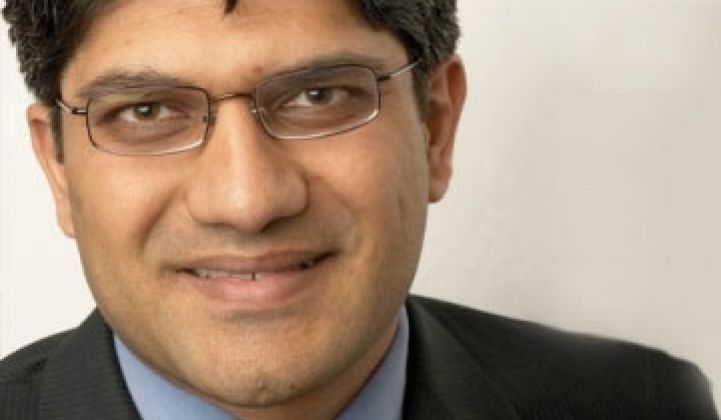For many years, solar energy in the U.S. was criticized for being too expensive. Now federal policymakers are on the verge of making solar power more expensive, throwing the industry’s growth into reverse gear, increasing costs for consumers, threatening thousands of jobs and triggering a trade war with China.
On October 10, the U.S. Department of Commerce will announce its final ruling on whether to impose tariffs of up to 250 percent on Chinese-made crystalline silicon photovoltaic cells. In order for any tariffs to go into effect, the U.S. International Trade Commission, in a decision expected in November, must determine that Chinese practices have harmed or threaten to harm the U.S. solar industry. These rulings will come after preliminary decisions by the Commerce Department, released earlier this year, imposing anti-subsidy tariffs and anti-dumping duties on some solar modules imported from China.
In spite of the push for protectionism, free global competition and falling prices have benefited the U.S. solar industry. With more than 5,000 companies and over 100,000 employees, the U.S. solar industry has been expanding its workforce by 6.8 percent a year, adding some 7,000 jobs in 2011, while the entire economy had a job growth rate of only 0.7 percent.
Domestic solar manufacturing is a goal that we all support. However, even Gordon Brinser admitted that his company and others would not be saved through these solar tariffs on Chinese modules. First, the bulk of new demand in the United States since 2009 has come from utility-scale projects -- projects that would not exist but for the low prices on today’s solar modules. In fact, Dick Swanson of Sunpower predicted that solar modules needs to be $1.12/Wdc with utility-scale contracts of $0.12 per kilowatt-hour. Today, utility scale contracts have to be $.09 per kilowatt-hour to compete with natural gas -- only possible with today’s lower module prices. Second, solar is a global industry with manufacturing in countries other than China. We are seeing low prices come from many countries, because it is not just China that is taking advantage of the latest manufacturing equipment and innovations. Third, U.S. policymakers have been more committed to phasing out solar incentives than they are to domestic solar module production. Policymakers have consistently forced the U.S. solar industry to honor the solar compact and reduce solar costs even if that means U.S. solar manufacturers might go out of business. Market innovators like SunPower and First Solar have figured out creative ways to avoid commoditization in the face of these pressures.
The U.S. manufacturing industry has many bright spots, including polysilicon -- the key component in producing solar cells -- as well as the equipment and machines that produce solar cells and modules. Other key manufacturing bright spots include solar structures and inverters.
Punitive tariffs are the wrong policy at the wrong time. Because the costs of solar energy have been falling, communities around the country are selecting solar power. With punitive tariffs, these customers will think twice about paying a premium for solar energy.
The punitive tariffs will hit hardest at the smaller solar companies. More than a few local solar installers have been hit with the Commerce Department’s preliminary decision allowing the tariffs to be applied retroactively to products that entered the U.S. 90 days before the ruling, imposing exorbitant extra charges for imports that they bought before knowing they would be paying these duties.
For example, Marco Mangelsdorf, a solar contractor from Hilo, Hawaii, told a hearing of the U.S. International Trade Commission on October 3 that he had received a notice from U.S. Customs and Border Protection requesting payment of $138,000 in additional duties on $54,000 of imported solar equipment purchased before the preliminary tariffs were imposed. At the very least, the U.S. International Trade Commission should call a halt to these retroactive charges.
And to the extent that companies such as SolarWorld, which is pushing protectionism, are not doing well, it’s because they have failed to keep up with charging market conditions -- they have only recently announced a utility-scale 72-cell offering. Their approach to solar kits has been outmaneuvered by residential financing by SunPower.
Instead of improving their own business model, as Sunpower and First Solar have, they are seeking government intervention in the form of punitive tariffs that are creating unnecessary chaos and have triggered a ruinous trade war with China.
For the U.S. solar industry, the real competitor is not imported photovoltaic cells -- our real competitor is electricity generated from fossil fuels, especially water-intensive natural gas. We need to keep reducing prices, not to increase our costs with punitive tariffs.
Instead of initiating a mutually destructive trade war, the U.S. and China should reach a broad trade agreement, negotiated by the two governments encouraging equitable and fair trade benefiting both country’s solar industries. To generate clean energy and green jobs, we need progress, not protectionism.
***
Jigar Shah is the president of the Coalition for Affordable Solar Energy (CASE) and the founder of SunEdison, a solar energy services company.



